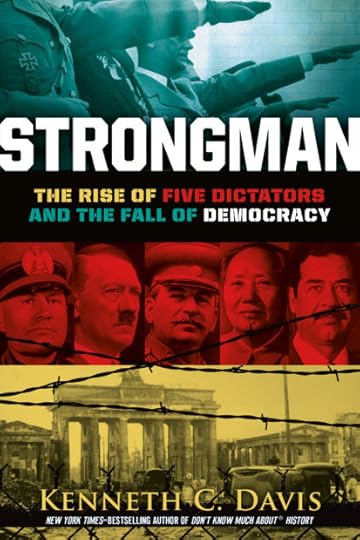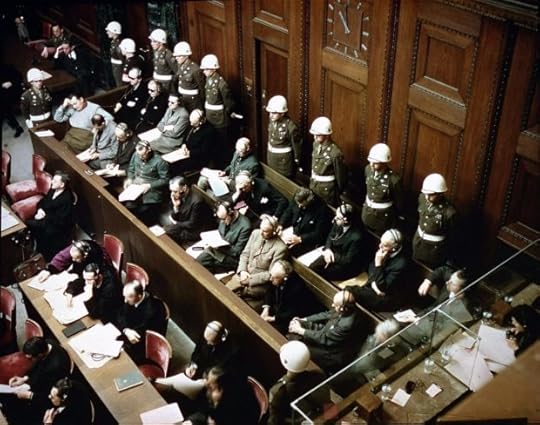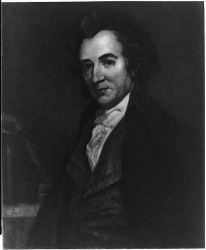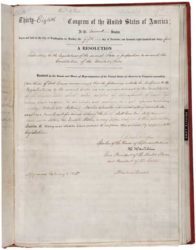Kenneth C. Davis's Blog, page 32
January 10, 2021
The Anniversary of “Kristallnacht”-A Don’t Know Much About® Audio Minute
I am reposting this from November. First came the scenes of thugs in Washington, D.C. vandalizing a church and beating passersby.
Then came Wednesday January 6, 2021 – a new day of infamy.
It was just one failure in a dizzying list that day — and during the weeks leading up to it — that resulted in the first occupation of the United States Capitol since British troops set the building ablaze during the War of 1812. But the death and destruction this time was caused by Americans, rallying behind the inflammatory language of an American president, who refused to accept the will of more than 81 million other Americans who had voted him out of office.
-“How a String of Failures Led to a Dark Day at the Capitol” New York Times
These events only bring Hitler’s Brownshirts and the events of November 1938 into sharper focus. We can’t say “never again” and not mean it.
On November 9th and 10th in 1938, an outburst of anti-Semitic violence swept across Hitler’s Germany.
An audio lesson on “Kristallnacht.”
https://dontknowmuch.com/wp-content/uploads/2020/11/New-Recording-5.m4a
Read more about Hitler’s Germany in Strongman: The Rise of Five Dictators and the Fall of Democracy

January 2, 2021
Remembering the Nuremberg Trials: A Don’t Know Much About® Audiominute
The Nuremberg Trials — A Don’t Know Much About® Audiominute
75 years ago on November 20, 1945, in the aftermath of World War II, the first trials of Nazi war criminals began. This military tribunal, the Nuremberg Trials, as they came to be known, was convened by the four victorious Allies—Great Britain, France, the Soviet Union, and the United States.
Listen to this audiominute.
https://dontknowmuch.com/wp-content/uploads/2020/11/New-Recording-9.m4a

Defendants in the Dock at the Nuremberg Trials (Image: National Archives)
That four great nations, flushed with victory and stung with injury stay the hand of vengeance and voluntarily submit their captive enemies to the judgment of the law is one of the most significant tributes that Power has ever paid to Reason.
What makes this inquest significant is that these prisoners represent sinister influences that will lurk in the world long after their bodies have returned to dust. We will show them to be living symbols of racial hatreds, of terrorism and violence, and of the arrogance and cruelty of power.
-United States Prosecutor Robert Jackson, Opening Statement (11/22/1945)
Read Robert Jackson’s full opening statement here
This is a timeline of the Nuremberg Trials from the Robert H. Jackson Center.
These resources on the Nuremberg Trials are from the Library of Congress.
This is an article about the Nuremberg Trials I wrote in 2005 for the Rutland (VT) Herald.
December 19, 2020
Whatever Became of Thomas Paine?
“These are the times that try men’s souls…. Tyranny, like hell is not easily conquered.”
–Thomas Paine, The American Crisis (December 19, 1776)

Thomas Paine ©National Portrait Gallery London copy by Auguste Millière, after an engraving by William Sharp, after George Romney oil on canvas, circa 1876
Of more worth is one honest man to society and in the sight of God, than all the crowned ruffians that ever lived.
-Thomas Paine Common Sense
Thomas Paine’s essay Common Sense is widely credited with helping to rouse Americans to the patriot cause. Its sales were extraordinary at the time; given today’s American population, current day sales would reach some 60 million copies.

Common sense; addressed to the inhabitants of America, on the following interesting subjects (Library of Congress)
The pamphleteering Paine is best known for Common Sense and The Crisis — first published on December 19 1776 — among other works that supported the cause of independence. But after the Revolution, Paine returned to his native England and later went to France, then in the throes of its Revolution.
Paine was caught up in the complex politics of the bloody Revolution there, eventually winding up in a French prison cell, facing the prospect of the guillotine. After eventually being freed, Paine wrote an open letter in 1796 angrily denouncing President George Washington for failing to do enough to secure his release.
“Monopolies of every kind marked your administration almost in the moment of its commencement. The lands obtained by the Revolution were lavished upon partisans; the interest of the disbanded soldier was sold to the speculator…In what fraudulent light must Mr. Washington’s character appear in the world, when his declarations and his conduct are compared together!”
Source: George Washington’s Mount Vernon
This was a serious case of bridge-burning and Paine swiftly fell from grace in America. But apart from dissing the Father of the Country, Paine had also fallen from favor for his most famous work after Common Sense. In 1794, he had published The Age of Reason (Part I), a deist assault on organized religion and the errors of the Bible.
In it, Paine had written:
I do not believe in the creed professed by the Jewish church, by the Roman church, by the Greek church, by the Turkish church, by the Protestant church, nor by any church that I know of. My own mind is my own church.
All national institutions of churches, whether Jewish, Christian or Turkish, appear to me no other than human inventions, set up to terrify and enslave mankind, and monopolize power and profit.
(Source: USHistory.org)
After returning to the United States, which owed so much to him, Paine was regarded as an atheist and was abandoned by most of his friends and former allies. He died in disgrace, an outcast from the United States he had helped create. The Quaker church he had rejected refused to bury him after he died in Greenwich Village (New York City) in 1809. He was buried on his farm in New Rochelle, New York. A handful of people attended his funeral.
An admirer brought this remains back to England for reburial there, but they were lost.
You can read more about Thomas Paine, his relationship with Washington and his ultimate fate in Don’t Know Much About History and Don’t Know Much About the American Presidents.
Winter Solstice 2020: The “Reason for the Season”
The 2020 Winter Solstice arrives in 2020 on December 21 at 5:02 am EST. So saith the Farmer’s Almanc.
So ’tis a perfect day to talk about the real “reason for the season.”
And here’s the real first Christmas question: Why all the fuss over December 25?
For starters, the Gospels never mention a precise date or even a season for the birth of Jesus. How then did we settle on December 25 and all those festive lights?
If a bright light just went off in your head, you’re getting warm. It’s largely about the Sun.
In ancient times, a popular Roman festival celebrated Saturnalia, a Thanksgiving-like holiday marking the winter solstice and honoring Saturn, the god of agriculture. The Saturnalia began on December 17th and while it only lasted two days at first, it was eventually extended into a weeklong period that lost its agricultural significance and simply became a time of general merriment. Even slaves were given temporary freedom to do as they pleased, while the Romans feasted, visited one another, lit candles and gave gifts. Later it was changed to honor the official Roman Sun god known as Sol Invictus (“Unconquered Sun”) and the solstice fell on December 25.
Two other important pagan gods popular in ancient Rome were also celebrated around this date. The Roman were big on adopting the gods of the people they conquered. Mithra, a Persian god of light who was first popular among Roman soldiers, acquired a large cult in ancient Rome. The birth of Attis, another agricultural god from Asia Minor, was also celebrated on December 25. Attis dies but is brought back to life by his lover, a goddess whose temple later became the site of an important basilica honoring the Virgin Mary. By the way, the symbol of Attis was a pine tree.
Candles. Gift giving. Pine trees. Dying gods brought back to life. Hmmm. Sound familiar?
All the similarities between Saturnalia and these other Roman holidays and the celebration of Christmas are no coincidence. In the fourth century, Pope Julius 1 assigned December 25 as the day to celebrate the Mass of Christ’s birth –Christ’s mass. This was a clever marketing ploy that conveniently sidestepped the problem of eliminating an already popular holiday while converting the population.
There is a scholarly argument that the December 25 date was marked earlier in some Christian communities, as argued by Yale Divinity school Dean Andrew McGowan. But the official recognition by the Pope cemented the date for many Christians. In other Christian communities, January 6 — the Epiphany or the day the magi visited the infant Jesus– was considered more significant. The period between these dates also accounts for the “Twelve Days of Christmas.” Other authorities disagree and say that December date was arrived at by adding nine months to March 25, the Feast of the Annunciation, the day of Jesus’s miraculous conception.
But most modern Christmas traditions reflect the merger of pagan rituals, beliefs, and traditions with Christianity. The early church fathers knew that they couldn’t convert people without allowing them to keep some of their ancient festivals and rituals so they would allow them if they could be connected to Christianity.
The importance of the winter solstice, then, is crucial to understanding many of the other traditions of this season. Evergreen trees, mistletoe, holly, and Yule logs all relate back to pre-Christian practices and symbols that celebrate the return of light and life after the Solstice. That’s why the Puritans rejected Christmas celebrations under Cromwell and in the Massachusetts colony in 1659. (Read my post Who Started the War on Christmas?“)
While we are talking about dates, the precise year of the birth of Jesus is also a mystery. The dating system we use is based on a system devised by a monk around 1500 years ago and is seriously flawed. The historical King Herod who ordered the massacre of the innocents died in 4 BC (or BCE, Before the Common Era). The “census” ordered by Emperor Augustine is not recorded in Roman history, but a local census did take place in the Roman province of Judea in 6 AD (or CE, the Common Era). Is that all perfectly clear now?
You can read more about the mythic roots of Christmas and the gospel accounts of Jesus in Don’t Know Much About Mythology and Don’t Know Much About® the Bible.
December 16, 2020
Remembering the Nuremberg Trials: A Don’t Know Much About® Audiominute
The Nuremberg Trials — A Don’t Know Much About® Audiominute
75 years ago on November 20, 1945, in the aftermath of World War II, the first trials of Nazi war criminals began. This military tribunal, the Nuremberg Trials, as they came to be known, was convened by the four victorious Allies—Great Britain, France, the Soviet Union, and the United States.
Listen to this audiominute.
https://dontknowmuch.com/wp-content/uploads/2020/11/New-Recording-9.m4a

Defendants in the Dock at the Nuremberg Trials (Image: National Archives)
That four great nations, flushed with victory and stung with injury stay the hand of vengeance and voluntarily submit their captive enemies to the judgment of the law is one of the most significant tributes that Power has ever paid to Reason.
What makes this inquest significant is that these prisoners represent sinister influences that will lurk in the world long after their bodies have returned to dust. We will show them to be living symbols of racial hatreds, of terrorism and violence, and of the arrogance and cruelty of power.
-United States Prosecutor Robert Jackson, Opening Statement (11/22/1945)
Read Robert Jackson’s full opening statement here
This is a timeline of the Nuremberg Trails from the Robert H. Jackson Center.
These resources on the Nuremberg Trials are from the Library of Congress.
This is an article about the Nuremberg Trials I wrote in 2005 for the Rutland (VT) Herald.
December 12, 2020
The Anniversary of “Kristallnacht”-A Don’t Know Much About® Audio Minute
I am reposting this from November. The scenes of thugs in Washington, D.C. vandalizing a church and beating passersby only brings Hitler’s Brownshirts and the events of November 1938 into sharper focus. We can’t say “never again” and not mean it.
On November 9th and 10th in 1938, an outburst of anti-Semitic violence swept across Hitler’s Germany.
An audio lesson on “Kristallnacht.”
https://dontknowmuch.com/wp-content/uploads/2020/11/New-Recording-5.m4a
Read more about Hitler’s Germany in Strongman: The Rise of Five Dictators and the Fall of Democracy

December 10, 2020
Who Said It? (12/10/2020)
Abraham Lincoln, First Inaugural Address, (Monday March 4, 1861)

Abraham Lincoln (November 1863) Photo by Alexander Gardner
I have no purpose, directly or indirectly, to interfere with the institution of slavery in the States where it exists. I believe I have no lawful right to do so, and I have no inclination to do so.
*
It is seventy-two years since the first inauguration of a President under our National Constitution. During that period fifteen different and greatly distinguished citizens have in succession administered the executive branch of the Government. They have conducted it through many perils, and generally with great success. Yet, with all this scope of precedent, I now enter upon the same task for the brief constitutional term of four years under great and peculiar difficulty. A disruption of the Federal Union, heretofore only menaced, is now formidably attempted.
I hold that in contemplation of universal law and of the Constitution the Union of these States is perpetual. Perpetuity is implied, if not expressed, in the fundamental law of all national governments. It is safe to assert that no government proper ever had a provision in its organic law for its own termination. Continue to execute all the express provisions of our National Constitution, and the Union will endure forever, it being impossible to destroy it except by some action not provided for in the instrument itself.
*
In your hands, my dissatisfied fellow-countrymen, and not in mine, is the momentous issue of civil war. The Government will not assail you. You can have no conflict without being yourselves the aggressors. You have no oath registered in heaven to destroy the Government, while I shall have the most solemn one to “preserve, protect, and defend it.”
*
I am loath to close. We are not enemies, but friends. We must not be enemies. Though passion may have strained it must not break our bonds of affection. The mystic chords of memory, stretching from every battlefield and patriot grave to every living heart and hearthstone all over this broad land, will yet swell the chorus of the Union, when again touched, as surely they will be, by the better angels of our nature.
Full text of Lincoln’s First Inaugural Address
December 8, 2020
Who Started the “War on Christmas?”

“In the interest of labor and morality” (1895: Image Courtesy of Library of Congress Prints and Photographs Division Washington, D.C. 20540 USA http://hdl.loc.gov/loc.pnp/pp.print)
(Revision of post first published 12.11.2o13. But it never gets old.)
It’s that time of year. Cue the lights, decorations, music.… and the “War on Christmas.”
Proclaiming a secular assault on the religious significance of the holiday has become a seasonal tradition, just like the Macy’s Parade with Santa Claus. Saying “Merry Christmas” has been a staple of conservative talk show hosts for years and part of America’s political culture wars..
The basic premise: Christmas is under attack by Grinchy atheists and secular humanists who want to remove any vestige of Christianity from the public space. Any criticism of public displays devoted to religious symbols –mangers, crosses, stars — is seen by these folks as part of a wider attack on “Christian values” in America. Mass market retailers who substituted “Happy Holidays” for “Merry Christmas” are part of the conspiracy to “ruin Christmas.”
But in fact, most religious displays are not banned. Courts simply direct that one religion cannot be favored over another under the Constitutional protections of the First Amendment. Christmas displays are generally permitted as long as menorahs, Kwanzaa displays, and other seasonal symbols are also allowed.
In other words, the “War on Christmas” is pretty much a phony war. But where did this all start?
The first laws against Christmas celebrations and festivities in America came during the 1600s –from the same wonderful folks who brought you the Salem Witch Trials — the Puritans. (By the way, H.L. Mencken once defined Puritanism as the fear that “somewhere someone may be happy.”)
“For preventing disorders, arising in several places within this jurisdiction by reason of some still observing such festivals as were superstitiously kept in other communities, to the great dishonor of God and offense of others: it is therefore ordered by this court and the authority thereof that whosoever shall be found observing any such day as Christmas or the like, either by forbearing of labor, feasting, or any other way, upon any such account as aforesaid, every such person so offending shall pay for every such offence five shilling as a fine to the county.”
–From the records of the General Court,
Massachusetts Bay Colony
May 11, 1659
The Founding Fathers of the Massachusetts Bay Colony were not a festive bunch. To them, Christmas was a debauched, wasteful festival that threatened their core religious beliefs. They understood that most of the trappings of Christmas –like holly and mistletoe– were vestiges of ancient pagan rituals. More importantly, they thought Christmas — the mass of Christ– was too “popish,” by which they meant Roman Catholic. These are the people who banned Catholic priests from Boston under penalty of death.
This sensibility actually began over the way in which Christmas was celebrated in England. Oliver Cromwell, a strict Puritan who took over England in 1645, believed it was his mission to cleanse the country of the sort of seasonal moral decay that Protestant writer Philip Stubbes described in the 1500s:
‘More mischief is that time committed than in all the year besides … What dicing and carding, what eating and drinking, what banqueting and feasting is then used … to the great dishonour of God and the impoverishing of the realm.’
In 1644, Parliament banned Christmas celebrations. Attending mass was forbidden. Under Cromwell’s Commonwealth, mince pies, holly and other popular customs fell victim to the Puritan mission to remove all merrymaking during the Christmas period. To Puritans, the celebration of the Lord’s birth should be day of fasting and prayer.
In England, the Puritan War on Christmas lasted until 1660. In Massachusetts, the ban remained in place until 1687.
So if the conservative broadcasters and religious folk really want a traditional, American Christian Christmas, the solution is simple — don’t have any fun.
Read my article on religion in America, “America’s True History of Religious Tolerance” (Smithsonian)
And read more about the Puritans in Don’t Know Much About® History and America’s Hidden History. The history behind Christmas is also told in Don’t Know Much About® The Bible.

America’s Hidden History, includes tales of “Forgotten Founders”

Don’t Know Much About History (Revised, Expanded and Updated Edition)

December 1, 2020
STRONGMAN: The Rise of Five Dictators and the Fall of Democracy
STRONGMAN: The Rise of Five Dictators and the Fall of Democracy published on October 6, 2020

Strongman named among Washington Post Best Books of 2020
Starred review from Kirkus Reviews “History’s warnings reverberate in this gripping read about five dictatorial strongmen.
A pitch-perfect balance of nuanced reflection and dire warning.”
Starred Review from Publishers Weekly “A fascinating, highly readable portrayal of infamous men that provides urgent lessons for democracy now.”
Read the full review here
Starred Review from Shelf Awareness “Kenneth C. Davis…conveys his plentiful knowledge of dictators in this powerful, spine-tingling biographic work that covers five of the world’s most horrifying autocrats. Grounded in thorough research, Strongman expertly explores the fragility of democracy …”
Read the full review here
STRONGMAN tells the story of the rise to power of five of the most deadly dictators of the 20th century — Mussolini, Hitler, Stalin, Mao Zedong, and Saddam Hussein.
A review in Booklist says, “Davis does not sugarcoat his material, inviting long thoughts with his assertion that this is a decidedly human story that points to real people as evidence that evil exists in this troubled world.”
In addition to telling how these men took unlimited power, brought one-party rule to their nations, and were responsible for the deaths of millions of people, the book offers a brief history of Democracy and discusses the present threat to democratic institutions around the world.
In a time when Democracy is under assault across the globe, it is more important than ever to understand how a Strongman takes power and how quickly democracy can vanish –even as millions cheer its death.
Order the hardcover and e-book from Holt Books.
An audiobook is available from Penguin Random House.
ADVANCE PRAISE FOR STRONGMAN
“I found myself engrossed in it from beginning to end. I could not help admiring Davis’s ability to explain complex ideas in readable prose that never once discounted the intelligence of young readers. It is very much a book for our time.”
—Sam Wineburg, Margaret Jacks Professor of Education & History, Stanford University, author of Why Learn History (When It’s Already on Your Phone).
“Strongman is a book that is both deeply researched and deeply felt, both an alarming warning and a galvanizing call to action, both daunting and necessary to read and discuss.”
—Cynthia Levinson, author of Fault Lines in the Constitution: The Framers, Their Fights, and the Flaws That Affect Us Today
“A wake-up call to democracies like ours: we are not immune to despots . . . Strongman demonstrates that democracy is not permanent, unless it is collectively upheld. This book shakes that immortality narrative.”
—Jessica Ellison, President of the Minnesota Council for the Social Studies; Teacher Education Specialist, Minnesota Historical Society
Rarely does a history book take such an unflinching look at our common future, where the very presence of democracy is less than certain; even rarer is a history book in which the author’s moral convictions incite young readers to civic engagement; rarest of all, a history book as urgent, as impassioned, and as timely as Kenneth C. Davis’ Strongman.
—Eugene Yelchin, author of the Newbery Honor book Breaking Stalin’s Nose.
NEWS of STRONGMAN – This book is a selection of the Junior Library Guild.

November 21, 2020
Two for Thanksgiving: Real First Pilgrims & Holiday’s History
This Thanksgiving is different. Home alone? Here’s something to read.
Like the Macy’s parade –except this year– this is my Thanksgiving tradition. I post two articles about the holiday that appeared on the Op-Ed page of the New York Times.
The first, from 2008, is called “A French Connection” and tells the story of the real first Pilgrims in America. They were French. In Florida. Fifty years before the Mayflower sailed. It did not end with a happy meal. In fact, it ended in a religious massacre.

Illustration by Nathalie Lété in the New York Times
TO commemorate the arrival of the first pilgrims to America’s shores, a June date would be far more appropriate, accompanied perhaps by coq au vin and a nice Bordeaux. After all, the first European arrivals seeking religious freedom in the “New World” were French. And they beat their English counterparts by 50 years. That French settlers bested the Mayflower Pilgrims may surprise Americans raised on our foundational myth, but the record is clear.
The complete story can be found in America’s Hidden History.

America’s Hidden History, includes tales of “Forgotten Founders”
The second is “How the Civil War Created Thanksgiving” (2014) and tells the story of the Union League providing Thanksgiving dinners to Union troops.
Of all the bedtime-story versions of American history we teach, the tidy Thanksgiving pageant may be the one stuffed with the heaviest serving of myth. This iconic tale is the main course in our nation’s foundation legend, complete with cardboard cutouts of bow-carrying Native American cherubs and pint-size Pilgrims in black hats with buckles. And legend it largely is.
In fact, what had been a New England seasonal holiday became more of a “national” celebration only during the Civil War, with Lincoln’s proclamation calling for “a day of thanksgiving” in 1863.
Enjoy them both.

Don’t Know Much About® History: Anniversary Edition

Don’t Know Much About the Civil War (Harper paperback, Random House Audio)

Now In paperback THE HIDDEN HISTORY OF AMERICA AT WAR: Untold Tales from Yorktown to Fallujah



